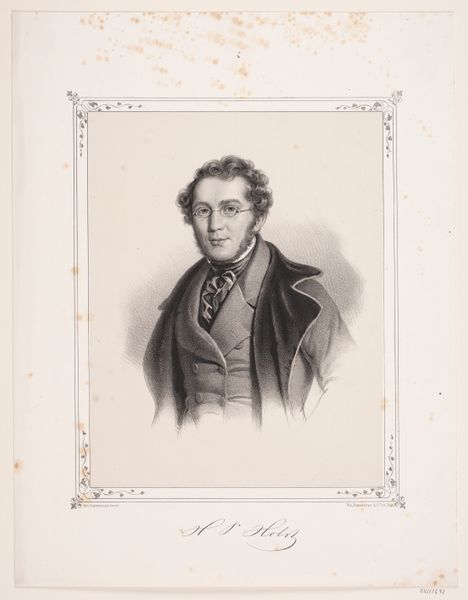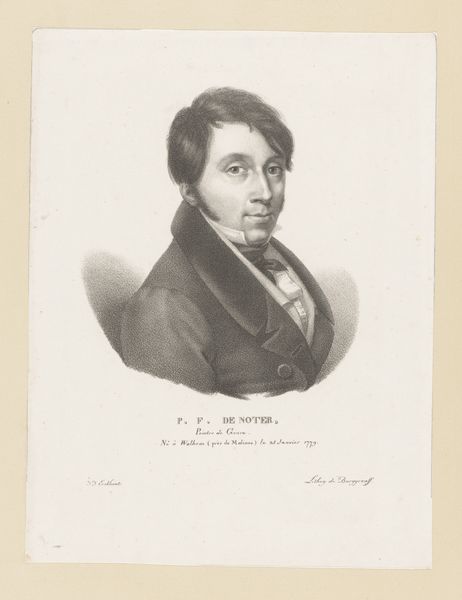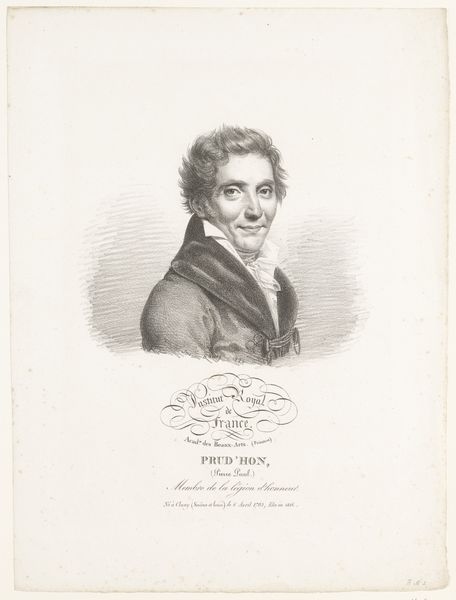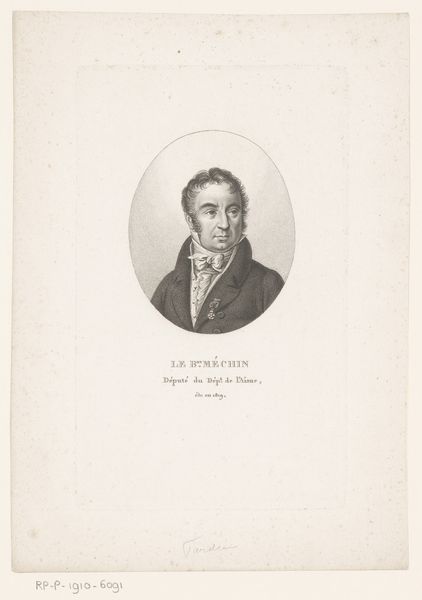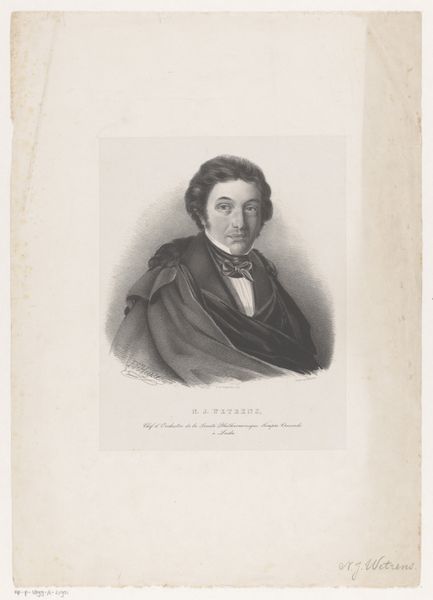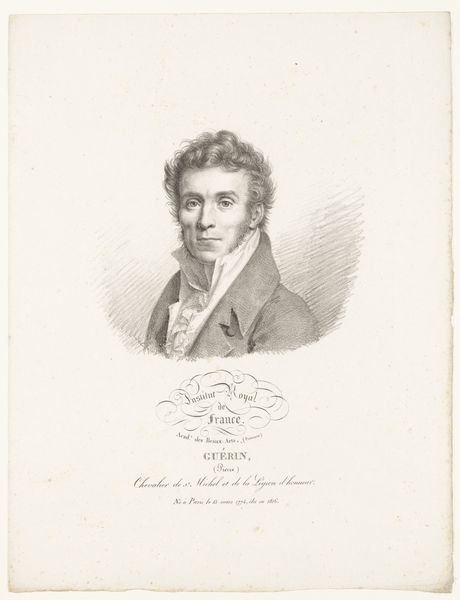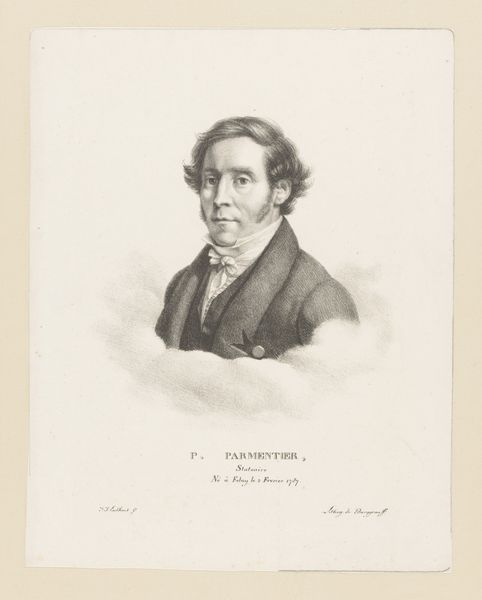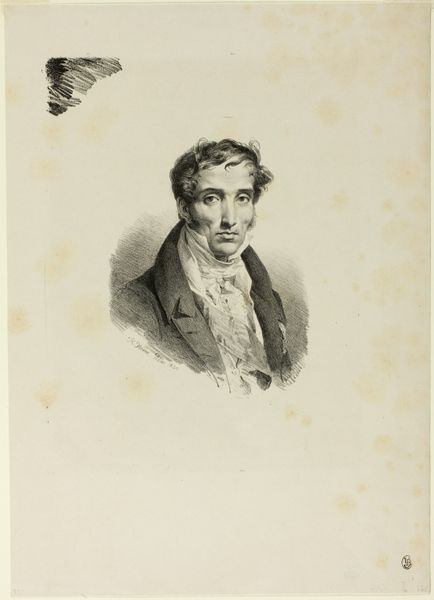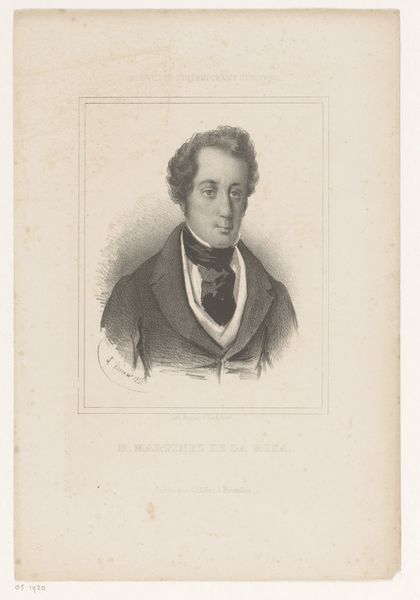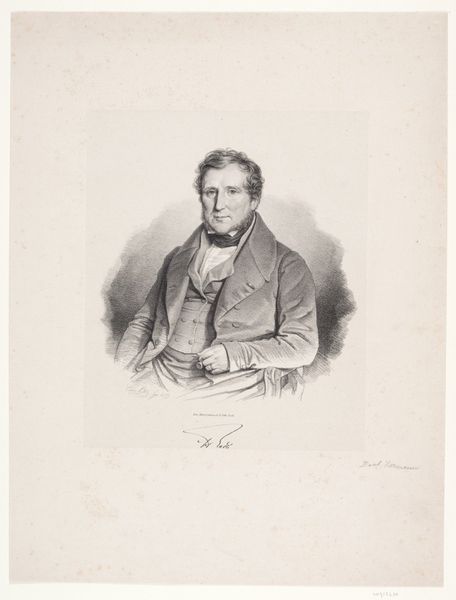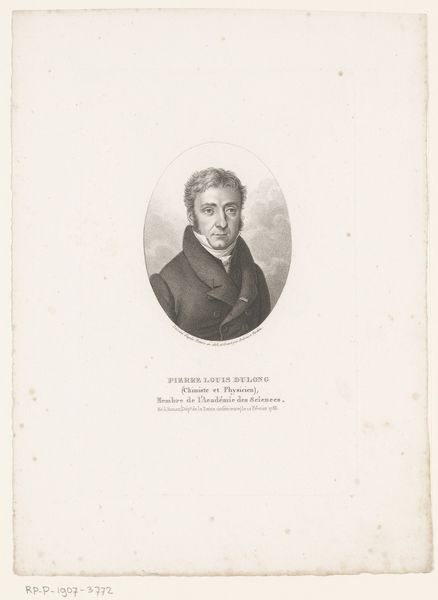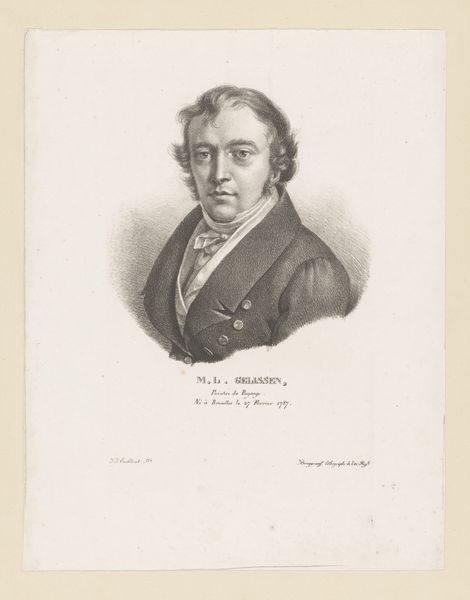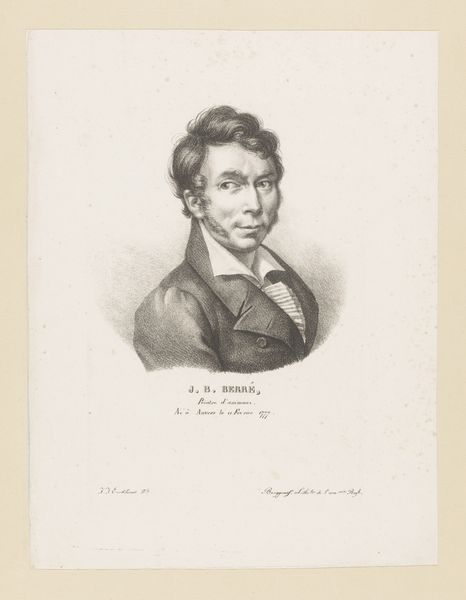
drawing, print, graphite
#
portrait
#
drawing
#
neoclacissism
# print
#
romanticism
#
graphite
#
realism
Dimensions: height 291 mm, width 230 mm
Copyright: Rijks Museum: Open Domain
Guillaume Philidor Van den Burggraaff created this portrait of Jean-Baptist André De Noter using lithography, a printmaking process that democratized image production in the 19th century. Lithography relies on the simple principle that oil and water don't mix. The artist would have drawn directly onto a prepared limestone or metal plate with a greasy crayon. This area attracts ink, while the wet areas repel it. Each print requires re-inking, but many identical images can be made. Consider the social context here. Before lithography, portraiture was largely the preserve of the wealthy, commissioning painted likenesses. Lithography made images more accessible, creating a visual culture that spread rapidly. The artist's skill lies in controlling the medium, achieving nuanced tones and textures. The inherent reproducibility of lithography changed the art world forever, paving the way for mass media and transforming our relationship to images.
Comments
No comments
Be the first to comment and join the conversation on the ultimate creative platform.
